THE successful synchronisation of unit three of the R25bn Ingula hydro pump storage scheme to the grid last week will add 333MW, reducing pressure on the grid and allowing Eskom to undertake its maintenance programme, Public Enterprise Minister Lynne Brown said Thursday.
The scheme is located on the escarpment of the Little Drakensberg. It consists of the upper Bedford dam and a lower Bramhoek dam, which are 4.6km apart and connected by waterway tunnels. The underground powerhouse houses four 333MW reversible pump-turbine units. The water is pumped to the upper dam in non-peak periods and released to generate electricity.
Once it comes into full operation later this year, the scheme will add a total of 1,332MW to the grid.
The testing before synchronisation of unit four has started while the major construction work of units one and two has also been completed.
“The construction of the lower waterways was completed in December last year and has been filled with water from the lower dam,” the minister said.
Eskom CEO Brian Molefe said the construction was one year ahead of target. “We are relying on machines number two and three to help us through winter and allow us to use less diesel,” he said.
Delays since the project started In 2008 had escalated its cost from the initial projection of R17bn to R25bn.
Mr Molefe said Eskom was working very hard to conclude its construction of the Medupe and Kusile power stations ahead of target. The two power stations and Ingula will add about 11,000MW to the grid on completion of them all in about five years’ time.
On completion, he said, SA would have enough electricity for economic growth and perhaps even a surplus to sell to its neighbours.
Mr Molefe noted that the review of SA’s sovereign credit rating by Moody’s also involved a review of Eskom’s rating as the utility was owned by the state and relied on it for financial support.
Ms Brown said Eskom had made great progress in terms of its leadership stability, maintenance programme, finances and build programme. Maintenance had not required load shedding as in the past, fiscal discipline had been maintained and great progress made in the construction of Kusile and Ingula.
“Energy has been cited as a constraint to economic growth over the last year but it is clear that SA has to deal decisively with this challenge to ensure that we support the economic recovery,” Ms Brown said.
She expressed a strong view that in new generation projects such as coal there should be public-private partnerships. The private sector could possibly be involved in the demothballing of old power stations.
Eskom chief financial officer Anoj Singh said Eskom had built up its cash reserves to about R40bn, which would largely be used for the R324bn build programme. Eskom’s lack of liquidity in the past had been of concern to the credit ratings agencies.
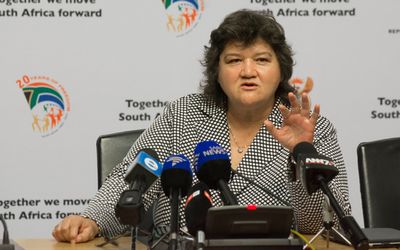
Public Enterprises Minister Lynne Brown. Picture: TREVOR SAMSON
THE successful synchronisation of unit three of the R25bn Ingula hydro pump storage scheme to the grid last week will add 333MW, reducing pressure on the grid and allowing Eskom to undertake its maintenance programme, Public Enterprise Minister Lynne Brown said Thursday.
The scheme is located on the escarpment of the Little Drakensberg. It consists of the upper Bedford dam and a lower Bramhoek dam, which are 4.6km apart and connected by waterway tunnels. The underground powerhouse houses four 333MW reversible pump-turbine units. The water is pumped to the upper dam in non-peak periods and released to generate electricity.
Once it comes into full operation later this year, the scheme will add a total of 1,332MW to the grid.
The testing before synchronisation of unit four has started while the major construction work of units one and two has also been completed.
“The construction of the lower waterways was completed in December last year and has been filled with water from the lower dam,” the minister said.
Eskom CEO Brian Molefe said the construction was one year ahead of target. “We are relying on machines number two and three to help us through winter and allow us to use less diesel,” he said.
Delays since the project started In 2008 had escalated its cost from the initial projection of R17bn to R25bn.
Mr Molefe said Eskom was working very hard to conclude its construction of the Medupe and Kusile power stations ahead of target. The two power stations and Ingula will add about 11,000MW to the grid on completion of them all in about five years’ time.
On completion, he said, SA would have enough electricity for economic growth and perhaps even a surplus to sell to its neighbours.
Mr Molefe noted that the review of SA’s sovereign credit rating by Moody’s also involved a review of Eskom’s rating as the utility was owned by the state and relied on it for financial support.
Ms Brown said Eskom had made great progress in terms of its leadership stability, maintenance programme, finances and build programme. Maintenance had not required load shedding as in the past, fiscal discipline had been maintained and great progress made in the construction of Kusile and Ingula.
“Energy has been cited as a constraint to economic growth over the last year but it is clear that SA has to deal decisively with this challenge to ensure that we support the economic recovery,” Ms Brown said.
She expressed a strong view that in new generation projects such as coal there should be public-private partnerships. The private sector could possibly be involved in the demothballing of old power stations.
Eskom chief financial officer Anoj Singh said Eskom had built up its cash reserves to about R40bn, which would largely be used for the R324bn build programme. Eskom’s lack of liquidity in the past had been of concern to the credit ratings agencies.


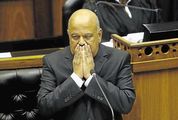
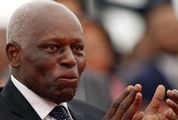

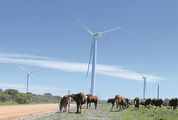


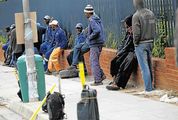
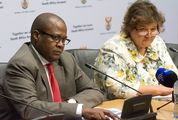












Change: 0.40%
Change: 0.47%
Change: -0.49%
Change: 0.53%
Change: 1.03%
Data supplied by Profile Data
Change: 1.71%
Change: 1.28%
Change: 0.40%
Change: 0.00%
Change: 1.64%
Data supplied by Profile Data
Change: -1.27%
Change: 0.00%
Change: 0.05%
Change: -0.08%
Change: 0.35%
Data supplied by Profile Data
Change: -0.02%
Change: 0.21%
Change: -0.06%
Change: 0.53%
Change: 0.70%
Data supplied by Profile Data